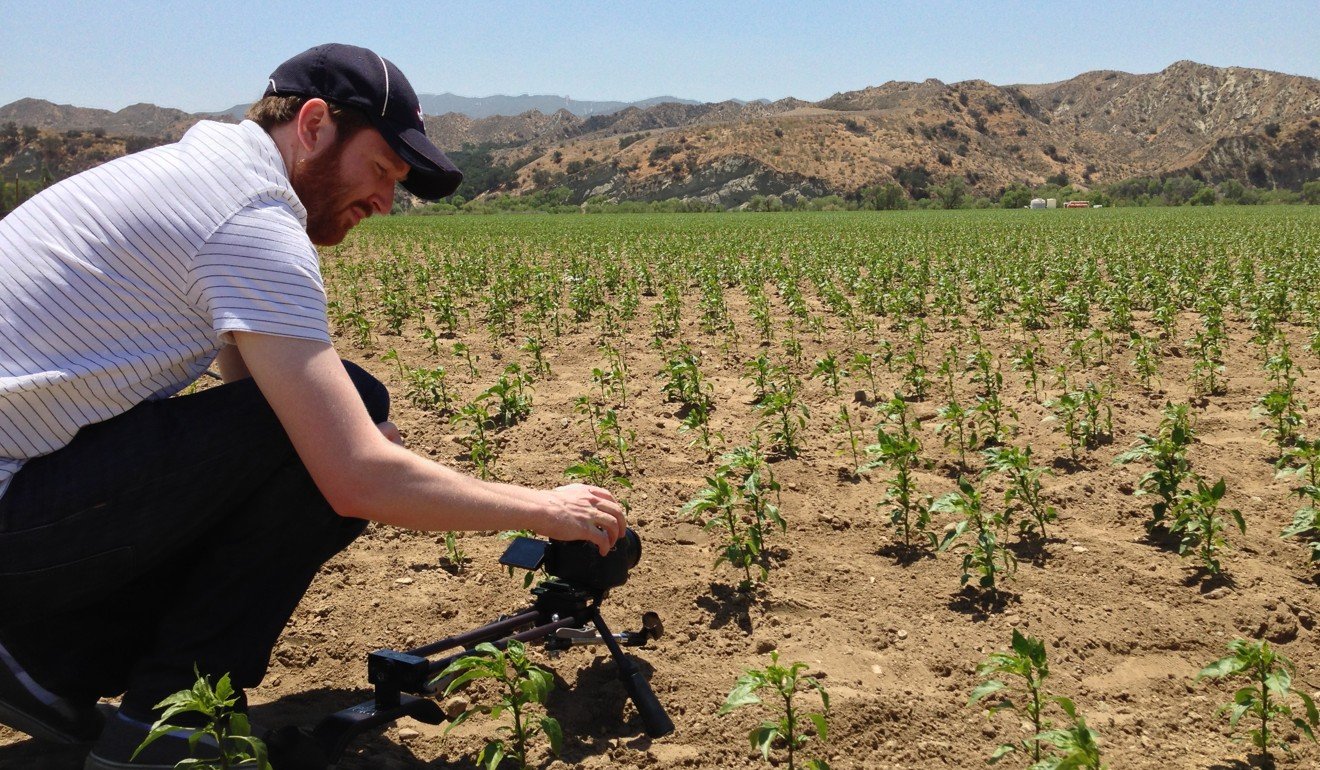Huy Fong Foods also produces sambal oelek, a spicy paste, and chilli garlic sauce, but its sriracha is still by far the biggest seller, with the factory churning out 12,000 bottles an hour to keep up with demand.
This is quite a feat for a company that has never bought advertising for its products, instead creating a food empire based solely on word of mouth. This has not stopped diehard fans creating dozens of their own adverts and songs dedicated to their favourite hot sauce on YouTube.
People in Si Racha [Thailand] were surprised to hear that sriracha, the namesake of their town, could be popular across the ocean
Griffin Hammond, filmmaker
While Huy Fong’s product is the most recognisable sriracha sauce in the West, it is by no means the only one on the market, nor was it the first. “Sriracha” is a generic name for a Thai hot sauce believed to have originated in the beachside town of Si Racha, on the east coast of Thailand.
There are numerous brands selling their own version of sriracha sauce in Thailand and, like ketchup, the flavour varies. But at its core sriracha contains chilli peppers, vinegar, garlic, sugar and salt.
“Some sriracha sauces are sweeter, some are more spicy, some are more sour. It depends on the producer,” says Titima Runguphan, founder of the Thai Culture Association in Hong Kong.

A selection of the many sriracha brands available. Photo: Griffin Hammond
The Si Racha district of Chonburi province is known for its chillis and seafood, Titima says. And Thai people love to tuck into fresh seafood served with a healthy dash of sriracha on the side, or an omelette over rice that’s smothered in it.
It is unclear who invented the much-loved sauce, but one of the country’s most popular variants, Sriraja Panich, brands itself the “original” sriracha sauce.
Sriraja Panich was invented in 1949 by a woman named Thanom Chakkapak. The story goes that she made it for friends and family in Si Racha using local chillis and garlic, and so named her product after the town. Seventy years later, Sriraja Panich is owned by food company Thaitheparos.

Filmmaker Griffin Hammond made the short documentary sriracha in 2013. Photo: Griffin Hammond
Recently it tried to crack the US market dominated by Huy Fong’s sauce, but to no avail. It has since shifted focus to China, after Thaitheparos’ vice-president saw fake versions of the sauce on Chinese shelves a few years ago.
To a connoisseur of Huy Fong’s variant, Sriraja Panich will taste slightly sweeter, less spicy, and have a thinner consistency than the American favourite – but that’s the way the Thais like it.
“[Huy Fong’s sriracha] doesn’t have layers. Thai people, we emphasis layers of taste; you have to have sweet, you have to have sour and you have to have saltiness … to suit the Thai taste. So maybe [Huy Fong’s spicy sriracha] … is suitable for Chinese people or Westerners, but for Thai people they would prefer the Thai recipe,” Titima says.

Griffin Hammond checks on the progress of jalapenos growing in Ventura County, California, for use in Huy Fong’s sriracha sauce. Photo: Griffin Hammond
While there is much debate as to which brand can lay claim to the tastiest sriracha sauce, one thing is for sure: if you live outside Thailand, you’re probably pronouncing its name incorrectly.
Sriracha has three syllables: see-RAH-cha. The first ‘R’ in sriracha is silent. “Although we spell it with an ‘R,’ it is not pronounced because it is something in Thai language that we call a false cluster,” Titima says.
Hammond travelled to Si Racha on his journey to discover the origins of the hot sauce, and says locals were amused to find that a version of it was so popular in the US.

Jalapenos growing in California. More than 45 million kilograms of the spicy peppers are ground up for Huy Fong’s sriracha sauce each year. Photo: Griffin Hammond
“There’s a common misconception in many places outside the US that Americans don’t like hot things. And so people in Si Racha were surprised to hear that sriracha, the namesake of their town, could be popular across the ocean,” he says of the sauce, which he uses daily.
As for Sriraja Panich, while he is a fan, Hammond is not going to be changing his hot sauce allegiances any time soon. “Yes, [Huy Fong’s sriracha] is still a better sauce for my American palate, I suppose,” he says.
Back in America, Huy Fong Foods remains a family-run business, with Tran’s son the company’s president and his daughter its vice-president. Despite his success, Tran has no plans to cash in on his good fortune.

David Tran at the Los Angeles factory. Photo: Griffin Hammond
“My dream is fulfilled. I don’t want anything else,” he says. “My goal was never to make money. I asked for little. Do not do things for the money; you won’t succeed.”
As for why there is a rooster on the front of the bottle, it is because Tran was born in the Year of the Rooster, according to the Chinese zodiac – a bold symbol for a man behind one of America’s boldest sauces.
Additional reporting by Yang Yang
This article appeared in the South China Morning Post print edition as: When the spice is right










 Reply With Quote
Reply With Quote